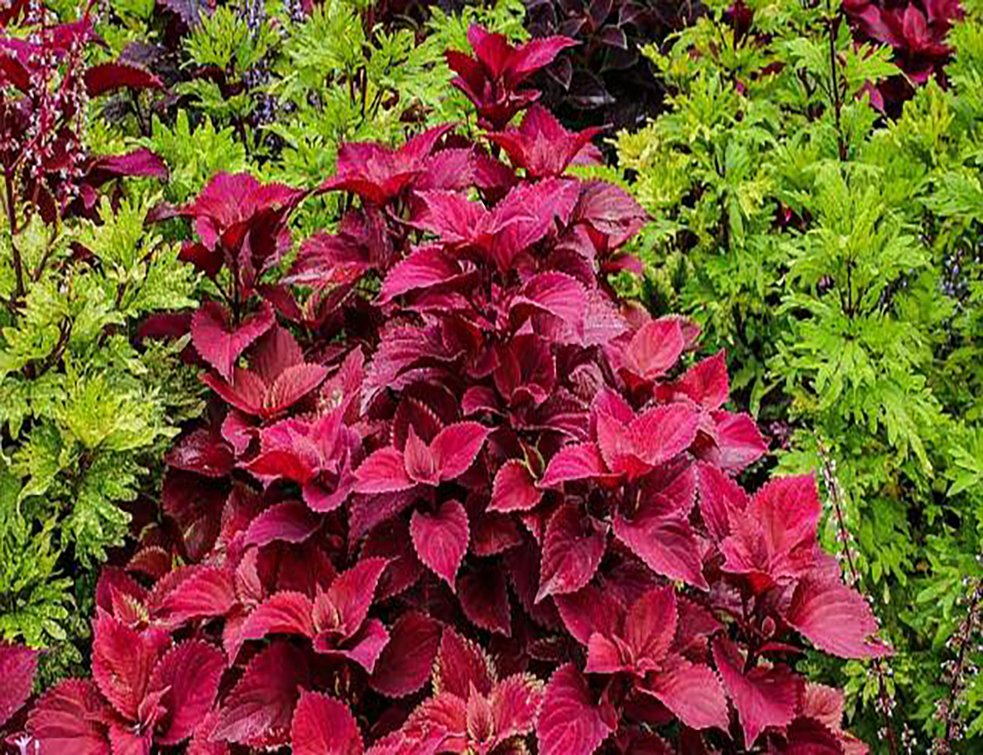"Sada I Briga": What Happened On 22.11.2018 & More
Could the vibrant tapestry of a Coleus's leaves, painted with hues of crimson, chartreuse, and gold, hold the secrets to a more beautiful world? It might seem like a simple plant, but the intricacies of its coloration, the way it thrives in unexpected places, and the sheer variety of its forms suggest a deeper, almost magical quality.
The conversation, a shared glance, a whispered word these are the threads that weave the fabric of our lives, moments that make up the world, and these are the elements that shape the identity of a "Coleus." Found on the 22nd of November, 2018, in a garden, among the multitude of vibrant plants, this collection of coleus plants, chosen for their unique foliage, became a subject of admiration.
| Characteristic | Details |
|---|---|
| Common Name | Coleus |
| Scientific Name | Plectranthus scutellarioides (formerly Coleus scutellarioides) |
| Family | Lamiaceae (Mint Family) |
| Origin | Southeast Asia and parts of Africa |
| Appearance | Herbaceous perennial, known for its brightly colored, patterned leaves. Colors include red, pink, yellow, green, purple, and combinations thereof. |
| Growth Habit | Upright, bushy, reaching heights of 1-3 feet (30-90 cm). |
| Light Requirements | Prefers partial shade to full sun, with brighter colors often developing in sunnier locations. |
| Watering | Requires consistent moisture; allow the soil to dry slightly between waterings. |
| Soil | Well-draining, rich soil. |
| Propagation | Easy to propagate from stem cuttings. |
| Uses | Ornamental plant for gardens, containers, and indoor settings. |
| Pests and Diseases | Susceptible to spider mites, mealybugs, and fungal diseases if overwatered. |
| Varieties | Countless cultivars with varying leaf colors, patterns, and sizes exist. |
| Interesting Fact | Coleus has been used in traditional medicine in some cultures. |
Reference: Gardenia.net
Could one possibly immerse oneself within, to get lost within the heart of beauty, and also in the surrounding light. The light that catches on the edges of the plants of these Coleus specimens. It is also about the light that is captured in the soul. The light that these beautiful specimens project outward.
This cultivation, which is the bright, lush leaves of the plant, is a common decorative plant that many find in the realm of gardening. The leaves of the plant contain a multitude of greens, yellows, reds, and purples, that provide vibrant decorations.
In the heart of the Moscow region, the focus is on the vivid display of nature's palette. From the balcony, there's the allure to observe the garden, the beautiful plants, and the intricate flowers within. The colors of the plants. It offers a delightful view, a display for the eyes, a moment to immerse oneself in the glory of nature.
Such a scene, such a setting. The location is of a type that creates a sense of wonder for those who are able to see it. It is an experience, a chance to be amazed. As one walks in, the eye is immediately drawn to the colorful assortment of plants, from hostas and fuchsias to astilbes, creating a tapestry of shapes and textures that celebrate the diversity of the natural world.
A typical variety of the Coleus which also provides a glimpse into the world of art. The vibrant coloration is not solely confined to the leaves; it permeates through to the roots, offering a look into the very essence of the plant.
It is a unique collection of plants, found in a variety of settings. As a whole, it is one of a kind.
The garden offers the opportunity to see the Coleus. In the gardens, the Coleus is a central feature of these landscapes. One can walk among the different specimens.
The Coleus is a collection of many bright colors. It comes to the eye as a light-catching plant, which is a welcome element to the landscape. The collection provides a display of the plants of many bright colors, bringing the eye an array of sights.
The Coleus is a plant that is known for its versatility. The leaves of this plant, which come in a variety of forms and styles, provide a colorful contrast, allowing for a unique style of presentation.
The plant is considered to have originated from Asia, and Africa, before being grown across Europe for the past one hundred years.
The ostriches were a sign of wealth, a sign of the world. They create a view of the plant and its leaves as the main elements of their art form. The ostriches are present in the exhibition, as the main component of the setting, as they have been transformed and changed in a location.
The leaf of the Coleus is a unique form of growth.
The Coleus is a type of leaf-grown plant that is known to have a colorful look, and is seen from the combination of different plant types.
These plants, brought from many bright colors, offer a feast for the eyes. A feast of light.
The Coleus has the leaves in various forms, such as various plant types and is a part of the leaves of the Coleus.
The Coleus is of the plants found in a number of gardens. In the gardens, the Coleus has a type of colorful leaves that give a display.
The plant, in its varied forms, is of interest to those who are involved with the garden. It is an enjoyable plant to add to a home garden.
In the world, the plants found here, that are in the form of the collection of Coleus, the plants come from a number of collections of professional gardeners and landscape designers.
The original article that provided the plant Coleus had this origin. This provided the view of the immune system.
Without observing or seeing these plants, the collection of plants can be used in your own home setting.


